Bringing HighTech Dentistry to Rural America
Dr. Jonathan Ehlers

Elevating the Patient Experience in Full-Arch Dentistry
Greg Essenmacher
How a Patient-Centric Approach Transforms Dental Practices
Dr. Ashley Lerman


Dr. Jonathan Ehlers

Elevating the Patient Experience in Full-Arch Dentistry
Greg Essenmacher
How a Patient-Centric Approach Transforms Dental Practices
Dr. Ashley Lerman

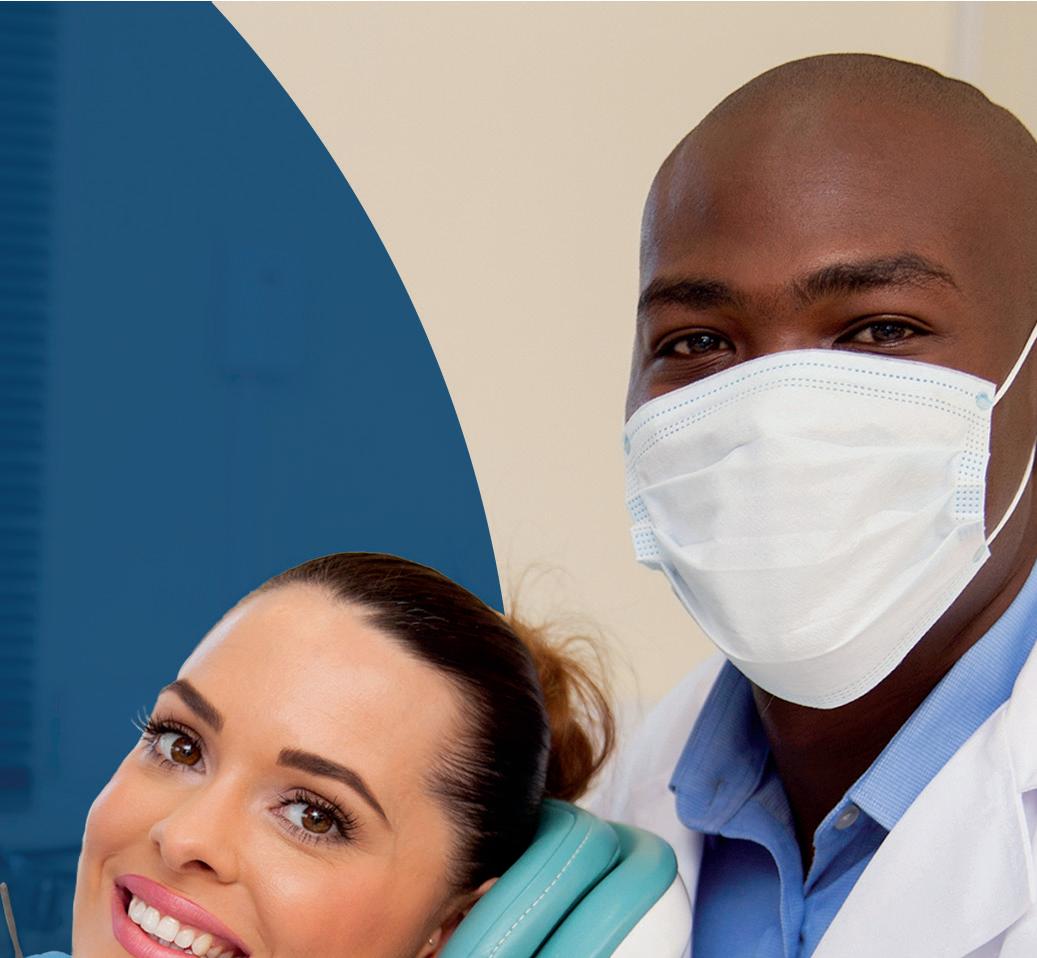



Backed by more than 140 years of experience supporting dental practices, the Patterson Dental team is ready to partner with you.
We o er more than 150,000 solutions so that you have access to whatever you need to run and grow a practice – from infection control products to the latest software and technology to dental o ce design and new building services.
Better yet, our expert team takes a consultative approach to understanding your needs and goals, guiding you to the right solutions and supporting your ongoing success.
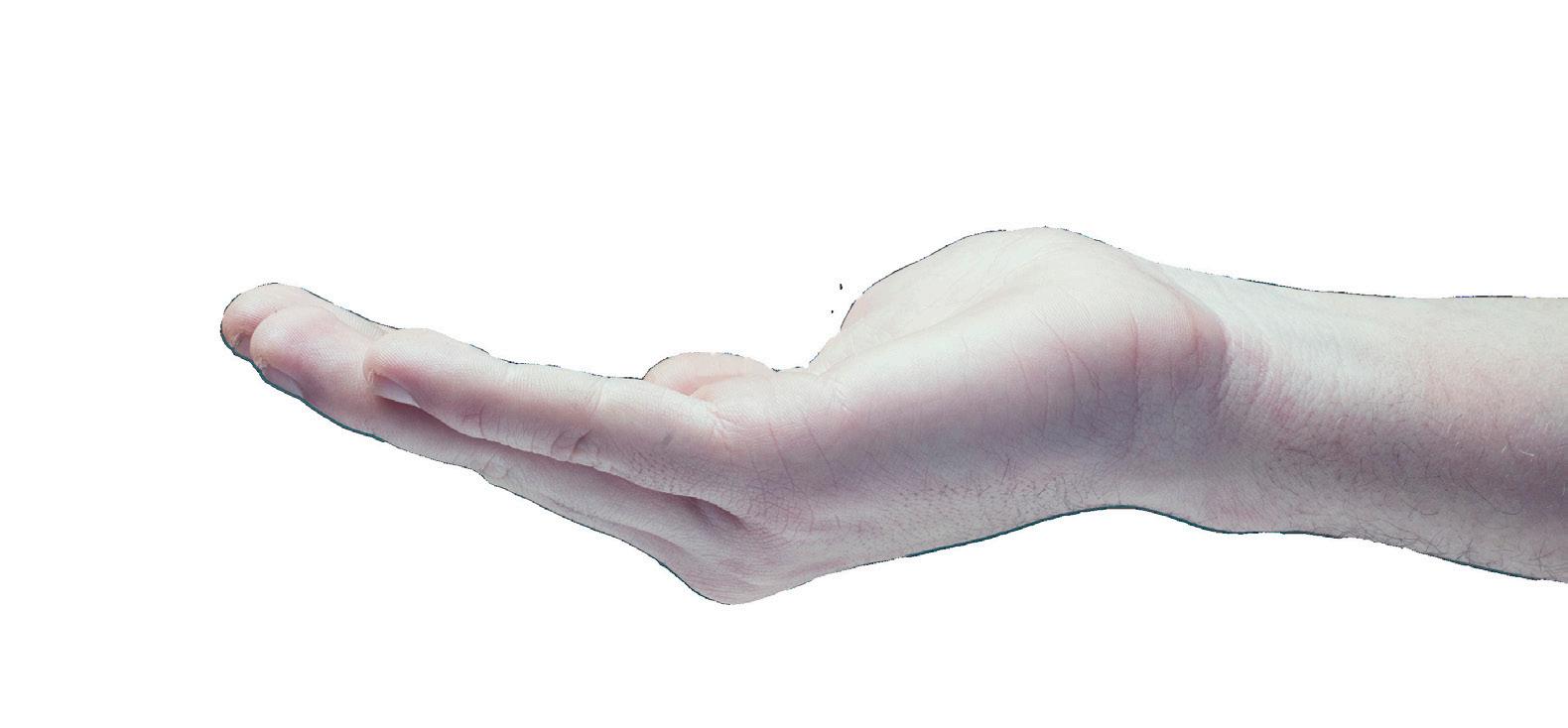
It is my privilege and honor to introduce the President of the Dental Entrepreneur: Future of Dentistry Advisory Board, Mary Fisher-Day.
Editor & Publisher
Anne M. Duffy, CEO, RDH
Assistant Editor Clare Yeo
Project Manager
Tari Sixpence
Website
Bhakti Kulmala
Sales & PR Officer
Nyasha Maripakwenda
Layout and Design
Brian Rummel
Cover Photo
Amanda Ehlers
Editorial Board
Mary Fisher-Day
Dr. Dirk Fleischman
Dr. Sharon Parsons
Dr. Isabel Rambob
Dr. David Rice
Travis Rodgers
Barb Stackhouse
Dr. Lucas Shapiro
Dr. Tom Snyder
Ryan Vet
Winter 2025 Contributors
Maggie Augustyn
Victoria S. Brokaw
Dr. Jonathan Ehlers
Greg Essenmacher
Casey Gocel
Dr. Ashley Lerman
Dr. David Rice
Dr. Luke Shapiro
Editorial Office
8334 Pineville Matthews Rd Ste. 103-201 Charlotte, NC 28226
704/953-0261
Fax 704/847-3315
anneduffyde@gmail.com
Send materials to:
Dental Entrepreneur Magazine 8334 Pineville Matthews Road Ste. 103-201 Charlotte, NC 28226
Mary is not only a visionary leader but also an exceptional business professional whose passion, dedication, and expertise have left a profound and lasting impact on our industry. With her wealth of knowledge and unwavering commitment, she has been instrumental in driving innovation, fostering growth, and shaping the future of dentistry. Her leadership continues to empower and inspire professionals across the field, paving the way for new opportunities and advancements.
Please join me in giving a warm welcome to Mary Fisher-Day!
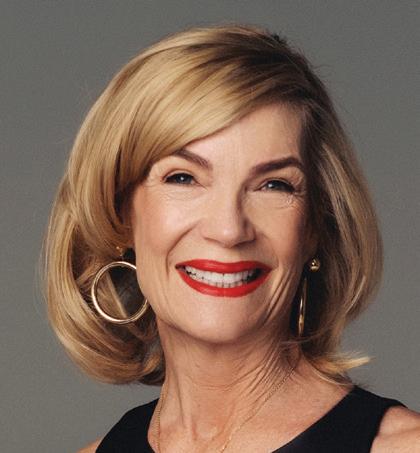
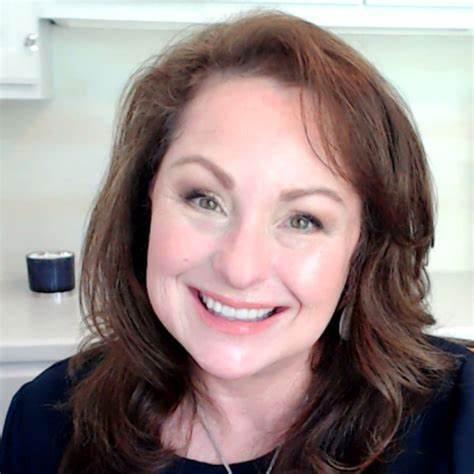
I first wrote for Dental Entrepreneur Magazine in 2009. At the time, the magazine was known as Dental Entrepreneur, Business Beyond the Classroom. Sixteen years later, I’m honored to be named President of the Advisory Board and Director of Content for the new iteration of the Magazine; Dental Entrepreneur, The Future of Dentistry. In the early years, the magazine was distributed to third and fourth-year dental students in schools throughout the US. The focus was later expanded to include dentists in their first ten years of practice. As we expand again, you will see articles, resources and tools to inspire dentists in all stages of their careers, whether they choose to work clinically or outside of clinical dentistry.
The Future of Dentistry is vast and there are endless opportunities within the profession. We will highlight opportunities available now and those to come and provide insight into clinical and technological advancements within the industry.
You will receive tips and solutions for Practice Management from the best advisors in the industry. Topics covered will include Human Resource Management, Compliance, Cyber Security, Marketing, Systems, Overhead solutions, Practice Culture and Dental Hygiene best practices.
We will provide insight into what’s happening in the world of Practice Transitions. You will see articles written by experts who are in the trenches. Topics will include best practices for navigating a practice transition, Dos and Don’ts for Employment Agreements, lending, insurance requirements, legal considerations, DSO’s, Small Group Practices and much more.
Thank you for allowing us to provide you with inspiration for the Future of Dentistry!
To Your Success,
Mary Fisher-Day President of the Advisory Board and Director of Content

6 Bringing High-Tech Dentistry to Rural America
Dr. Jonathan Ehlers
10 Why Do Patients Really Say No?
David Rice, DDS
12 It Isn’t Just Business, It Should Be Personal: Resolving Conflict in Business Partnerships
Maggie Augustyn, FAAIP, FICOI
16 Understanding BOI Filings for Dental Practices: What Dentists Need to Know
Victoria S. Brokaw
18 Elevating the Patient Experience in Full-Arch Dentistry
Greg Essenmacher
22 How Dr. Brendan Gallagher is Paving The Way For a Better Tomorrow
Luke Shapiro, DDS
24 How a Patient-Centric Approach Transforms Dental Practices
Dr. Ashley Lerman
28 Practitioners Can ‘ACT+’ to Preserve, Scale, and Grow Their Private Practice in Today’s DSO-Driven Market
Casey Gocel
Growing up in a small town in West Central Missouri, I have always had a passion for the people of rural America. My town of Cole Camp, MO, hovers around the 1,200 mark depending on the most recent census. It is filled with farmers, bankers, mechanics, small business owners, and most importantly, a sense of pride and love for our country.
One thing that always stood out to me though was the idea that there were certain amenities that we did not have access to because we were not in a large city. Whether it is the big shopping malls or the fancy IMAX movie theater, it was always known that those things were not a part of everyday life for a small-town boy from rural Missouri. I wanted to change that.
My path after high school took me to Lindenwood University in St. Charles, MO where I played baseball in college. Whenever I am at speaking engagements or talking with dental students, I always circle back to athletics, college athletics, in particular. Athletics instilled a drive in me to compete to win, and to strive to be the best version of myself regardless of the circumstances. To work in a team setting to achieve a goal greater than yourself. These values shaped my career and how I view my practice.
The next stop after Lindenwood was UMKC School of Dentistry. I received my DDS in 2010 and knew that surgical dentistry was going to be a focal point in my career path. 3D and digital dentistry were gaining a footing in the industry at that time, but I also had a desire to pursue the latest technology to enhance my ability to practice dentistry.
I graduated and started practicing in the summer of 2010. Still unsure how to best carve out my path in dentistry. I knew that I had to serve in a federally qualified health center, but what next? I decided to take an intern year in the Oral and Maxillofacial
Residency Program at Truman Medical Center in Kansas City, MO. This position typically leads to matriculating into the 4-year Oral Maxillo-Facial Residency Program. It was a year of great learning with challenges, it also became clear that general dentistry was going to be my path. Although OMS was not, it certainly gave me surgical skills and knowledge to help shape how my general practice would look.
I associated in an office for a couple more years before the voice inside my head all those years ago spoke up and said its time to go home. The countless hours of training, the ten-weekend intensive implant residency program in Bessemer, AL, the late nights developing a business plan for a potential startup…Tiger Family Dental was born.
In October of 2016, I opened Tiger Family Dental in Sedalia, MO, a town that is about 20 minutes from Cole Camp, where I grew up. I had a vision of bringing high-tech dentistry back to my hometown and changing how people in my area viewed dentistry. I always say, “Just because you live in a small town, doesn’t mean that you don’t deserve the absolute best!”
My business plan was conservative. I leased a small 1,300-squarefoot office with three treatment rooms and a mud room as my personal office. I had one front desk, one hygienist, one chairside assistant, and myself. The start-up was going to be efficient from a build-out cost perspective, but there were things that I knew I was not going to compromise on…technology. I budgeted into my start-up an intra-oral scanner, a CBCT, digital radiography, and intra-oral cameras. I knew that the blueprint for my practice was to educate patients on the risk factors, what was going on in their mouths, and how that affected them systemically. We were going to comprehensively diagnose and treat our patients, no more single-tooth dentistry with a “drill and fill” approach. We believe that the teeth are a smaller part of an integrated

physiological process and we as clinicians must holistically treat our patients.
The start-up was a success and after six months, I realized that my conservative estimations were just that, too conservative. I began the process of developing a commercial strip center that would house our new location in Sedalia, with ten treatment rooms and 6,000 square feet of total space. Patients were responding to the technological investment that we made in our practice. You can tell a patient that their upper right molar is cracked, or their amalgam filling is leaking, but if you can show them with an intra-oral photo, or a slice of the CBCT showing decay around a restoration, or a chronic lesion associated with a root, it begins to click. This resulted in growth for a practice that was hard to imagine.
Shortly after we launched our new location, it was also time to add to our team. We now have a full-time associate that we hired in January 2020, four hygienists, and a dedicated office manager. Our staff had grown to 15+ and we were off to the races…until the world shut down. Business across the world suffered through the pandemic, but it eventually ended and Tiger Family Dental, with the same principles of comprehensive diagnosis and treatment planning, was stronger after than before.
A key factor in our practice exhibiting sustained growth since our launch was the continued investment in technology and expanding our service mix. My associate, Dr. Erin, focuses on cosmetics and restorative dentistry, where I choose to focus on the surgical aspects, in particular, implant dentistry. Full-arch implant dentistry is a passion of mine and developing a digital workflow to make the process more efficient has been something that I have worked to implement since I began full-arch implant dentistry…welcome Yomi.
I remember in November of 2022, a rep who sold me my latest CBCT called me up and asked if I had any interest in a robot to help me with my implant placement. I thought about it and although I agreed to listen, I thought to myself there is no way that I can afford the investment in a fully guided robot that will provide haptic feedback and allow you to preplan the entire surgery and make any changes intraoperatively. A couple weeks later, the robot is sitting in my parking lot in a bus that allows you to demo the robot and test its functionality. It took about 10 minutes of demoing and I was sold.
I purchased the robot and began my robotic implant path in January of 2023. I have placed thousands of implants over a tenplus year period and used static guides, but nothing compared to the precision I saw with Yomi. Circling back to my passion of wanting to provide the most technologically advanced dentistry, it became clear that Yomi was the next step in that process. We have now placed nearly a thousand implants since adopting
Yomi and it’s obvious that robotic implant dentistry is the wave of the future.
Utilizing Yomi, we now can scan our patients, pre-plan the surgery, and pre-design the provisional prosthesis based on a records appointment that takes 30 minutes. We can complete our full-arch surgeries in less than 2 hours per arch and deliver an in-office, 3D-printed provisional that is directly seated onto multi-unit abutments the same day. A process that used to take 4, 5, or even 6 appointments, is now streamlined into as little as three. Yomi allows for precise implant planning, real-time flexibility to make changes, if need be, and the confidence that when there are tight windows for implant placement, I have confidence that the implant is going where it is planned every time.
Yomi has been a key part of our practice growth and because of embracing technology, we are now in the process of expanding again. We are adding four more treatment rooms and a dedicated surgical suite. This will give us the ability to bring on another associate and two more hygienists. We are nearing the 10-year mark of Tiger Family Dental’s inception and I look back on the growth curve we have experienced. From a small three-treatment room space to a fourteen-treatment room and surgical suite space with revenues well surpassing 5 million, investing in technology has allowed our practice to grow and stand out in the crowd.
Digital dentistry, robotic dentistry, 3D printing…these are at the forefront of what dentistry looks like in 2025. Highly advanced procedures will shape the care that we deliver to our patients centered around technology. The mission of Tiger Family Dental and myself is that those things can ALSO happen in rural America. I think back to when I was a kid growing up here with a dream of bringing the things that were out of reach for rural communities. I have great pride in knowing that high-tech dentistry can be accessible to people everywhere, it just takes the investment.
Dr. Ehlers graduated from UMKC School of Dentistry in 2010. He opened his practice in 2016 in Sedalia, MO where he owns and operates Tiger Family Dental. He practices with a surgical focus, full arch implant dentistry, in particular. Adopting the digital workflow is a passion of Dr. Ehlers as he has implemented technologies such as Yomi Robotic implant placement, 3-D printing, and intraoral scanning. He has been placing dental implants since 2012 and has extensive training in the field. Working as a KOL for Neocis, Dr. Ehlers enjoys educating and mentoring dentists to expand their knowledge with robotics and digital dentistry.
Photo credits: Holly Hatfield
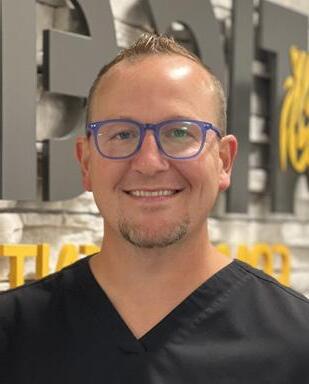





BILINGUAL SPANISH SPEAKING TEAMS
HYGIENE RECARE
REACTIVATION OF PATIENTS

A/P AND PAYROLL SUPPORT
DIRECTOR OF FIRST IMPRESSIONS
APPOINTMENT CONFIRMATION
SCHEDULE A DISCOVERY CALL
MARKETING
BOOKKEEPER/CONTROLLER
IT SUPPORT TEAMS
David Rice, DDS
Most young dentists and dental students I talk to believe patients say no for money reasons. Most young dentists and students I know are learning very bad lessons from people who mean well, but simply don’t understand human behavior.
Yep - I said it. It’s sad and it’s true.
Your patients come to you and have one of six thoughts in their head:
• Yes, money. Tell me how I can keep more of my money.
• Appearance. I want to look better so talk to me on how you can make that happen.
• Time. I’m busy and I need you to share how you’re going to get me in and out conveniently.
• Trust. Translation, I need to know that I actually need the dentistry and that you’re the one to do it.
• Comfort. I don’t want it to hurt while you’re working on me or after.
• Health. I’ve heard of the whole oral-systemic link and I’m in on staying healthy.
Here’s the trick: Student, young dentist, or seasoned pro, you and I need to understand which one of those six drivers is driving the patient in front of you. Then we need to speak to them in their love language.
I’m going to caveat all of this with certain technologies that give us a greater ability to do this and how we frame those technologies to each patient based on what they value.
AI. AI has come a long way in dentistry and has several verticals with mega-impact.
First, let’s take a look at AI and radiographs. A couple of the more well-known are Pearl AI and Overjet. These technologies do a few things that serve us well. They help us calibrate. If you’re a young dentist, that means every assistant, hygienist, and dentist can see and share what the others see and share. There’s power in consistency. There’s an epic failure in multiple opinions from the same practice.
On the student side, this is about you and your faculty being in alignment. Just like team members need to walk the same walk, so do faculty and students, or no is an answer you’re going to hear a lot.
Another vertical I won’t dive into here yet share is AI and answering our phones. The right systems are amazingly trainable and incredibly real/helpful to the average patients who strongly value convenience (that’s everyone!).
Intra-Oral Scanners. I’m guessing you’re either using one now, or at least have used one at some point. In my humble opinion, this is the future’s very upgraded intra-oral camera. In other words, if you have access to enough scanners, you don’t need an intra-oral camera anymore.
What I’m going to highly recommend to you is the healthy patient scan. That means every new patient gets a full-mouth (upper, lower, and bite) scan and every other year, every re-care patient gets one, too. Friends, if a picture’s worth 1000 words,
imagine what a 3D model of your patient is worth. Now, you’re going to tell me you don’t have time. You do–you just might not realize it. So if you feel you don’t, reach out to me. I am happy to show you how to create time and I’m going to promise you, when you do, your yes factor is going to climb.
Intra-Oral Cameras. If you don’t have an intra-oral scanner, or you don’t have access as it’s being shared amongst a high number of people, intra-oral cameras are still an excellent option. Like the intra-oral scanner, I’d recommend a photo tour of every new patient’s mouth and the same every other year on your re-care patients.
3D printers. If convenience is top of mind regardless of your patient’s primary focus on money, appearance, time, trust, comfort, or health–printers deliver! They allow us to keep our assistant with us all day and focus on whoever is in our chair. That’s productive. That’s convenient. They also allow us to increase our same-day dentistry and nothing makes for an easier yes than a patient who is already in our chair. No one likes missing more work or more time from all the things they love doing.
LEARNING HOW TO SPEAK TO EACH “WHO.”
Now that we’ve covered tech that helps, let’s talk about speaking to each patient based on what motivates them. This is going to feel like common sense to you - the trick is to intentionally think about what your patients want and to frame every conversation with it. When your patient knows you’re on their side - they will say yes - a lot!
If money is my thing and I’d rather spend mine somewhere else than on you and dentistry, how can you help me get what I want? You can save me money by catching things when they’re smaller and less expensive. The trick is framing what you’re telling me with that. In other words, because we caught this now - we can save you money. This means fluoride, sealants, understanding nutrition, habits, and consistent re-care today keep me from having decay and perio tomorrow. Fillings today keep me from crowns, root canals, tooth loss, and implants tomorrow.
If appearance is my thing , how can you help? Easy peasy if we’re talking any kind of dentistry I see, yes? Plug in that healthy scan and show me. Take those intra-oral camera pictures and show me. So how about functional dentistry? Perio? Occlusion? Is appearance a thing? Of course, it is. Are puffy, bloody gums pretty? Are broken, worn and stained teeth attractive?
If time is my thing and I’d rather be home with family and friends, or I need to be working locally or in another city, how can you help me? What if you frame prevention as the means of keeping me out of the office? Allowing me with more free time?
What if you frame early intervention with saving me from longer and/or multiple appointments?
What if my thing is trust? Principle one–take more CE. Dental school is a solid foundation but that’s it. The more competent you are, the more confident you’ll feel. The more confident you feel, the more you’ll tackle and the more competent you’ll become.
Principle two–maximize tech. The data on AI use as one example is staggering when it comes to patients trusting you, especially as a younger pro. Then, add in slowing down and getting to know me as a patient.
Lastly, when you feel me push back, call it out. Ask me if I trust you. Option one is I’m taken back and share I do, and I apologize. Option two is I say I don’t. That gives you an opportunity to educate me more.
How about comfort? Frame everything you share and do around how you’re not going to hurt me. Sometimes it’s a story about how you’ve done this a hundred times and everyone is comfortable. Sometimes it’s a topical anesthetic and more time for it to work. It could be some very cool tech we haven’t spoken of like a hard tissue laser and now you’re working needle-free.
Last but not least, what if it’s health? Now’s the time to talk all the dental school talk on that oral-systemic link. Show me my perio bacteria under a microscope. Check the pH of my mouth. Give me every home-care opportunity to avoid dental and medical issues and I’ll adore you.
Friends, some patients say no because of money. But if there are six drivers of why people say yes or no, and money is only one of those six, understand that the money side is only a segment. Learn what drives each patient. Learn why it drives them. You’re going to get a lot more yes and thank me later.
Oh yeah… if you want to know more on how to learn who wants what, just reach out and ask. It happens to be one of my favorite topics.
David Rice, DDS, is on a mission to improve our profession by leading the next generation of dentists to grow successful lives and practices. The founder of igniteDDS, Dr. Rice speaks to over 35 dental schools and residency programs a year on practice building, team building and wealth building. Dr. Rice is a private practitioner, educator, author, and mentor who connects students, young dentists, and professionals from diverse dental-related businesses, “fueling passion beyond the classroom.” ignitedds.com

Maggie Augustyn, FAAIP, FICOI
Five years into our marriage, almost nine years of being together, my husband and I almost divorced. We were living parallel lives, passing each other in the common areas of our condo because it was difficult to stay in the same room together. It got as bad as not being able to stand hearing the other talk or laugh. A therapist and a series of quite drastic life events saved us; and, as of today, we have been married for over 22 years, and together for 26. We have been grateful for those years. Yet, as life would have it, just because one difficulty has been overcome doesn’t mean that another challenge isn’t coming. And thus, over the last 18 months, the roles we held within our marriage and our home have been redefined. We both had difficulty in adjusting to them. In maneuvering away from the difficulty, we faced 16 years ago, Scott and I decided to get ahead of this. We knew therapy worked before and we sought it out once again.
We both sat on the very comfortable brown velvet couch in my husband’s long-time therapist’s office, Dr. William Corrado’s. Corrado, with his large square black-framed glasses and madscientist hair, embodies calm and deep spirituality. He is life’s greatest cheerleader. He believes all humans are born good. He emphatically outlines your strengths and guides you to live within your well-deserved celebrations. Corrado taught me, taught us, that in the moments of resentment, anger, difficulty, and fear to always come from a place of love. He taught Scott and me to always remember how much we love each other and
let that be the baseline in whatever heated discussions arise. Within that often laborious practice, we have continued to keep our marriage strong. Yet, it wasn’t until a recent dental meeting I attended that I was able to consider how that very baseline of basic love and care for one another can equally translate into the workplace.
September happens to be my favorite month. I wrote this article in September 2023, and it has taken almost a year and a half for it to see the light of day. The end of Q3 2023 was even better than the rest for me. I was honored to attend the Productive Dentist Academy Workshop as a faculty member for the first time. Gaining that honor had been three-plus years in the making, three-plus years of changes and challenges. But despite my new distinction, though present for the workshop, I always receive more than I give. In the Investment Grade Practice (IGP) part of the program there was a panel of partners, associates, and business owners discussing challenges connected with said relationships.
Dr. Galen Detrik, partner at VIDA Dental Studio, and Dr. Devin Giron, founder of VIDA Dental Studio, were asked how the two of them managed hardships or miscommunication. His words were simple and full of conviction: ‘We put brotherhood first.’ Brotherhood wasn’t necessarily specified as a relationship
between 2 men, but 2 humans. He defined it as kinship, as a love for the relationship, for one another on a deeply human level. It’s advice that is no different than that of Dr. Corrado but translated from a romantic admiration a marriage holds into that of a business relationship. It’s a lesson he said to have learned many years ago. It consists of an exercise that might not be easy to perform, yet Galen considered this application life-changing, as it afforded him the ability to consider another point of view, one alongside his. It not only helped find empathy and compassion. It afforded him humility. And it is this proverbial exercise of walking in another’s shoes that he’s held onto ever since. An exercise like this might also help us understand that we, too, will inevitably do some of our own mishandlings. An exercise like this might help us find self-compassion and forgiveness, knowing that we do the best we can with what we have. The approach isn’t novel, after all, we have heard the saying many different times, stated in many different ways. It is something, however, that Galen considers to be the bedrock of any relationship. The story he told at the IGP summit was one of incorporating what he had learned years ago into his current partnership. It was a story of him and Devin having grown apart and bringing that energy into the culture of the office.
The stain of the relationship was palpable and seeing its effect on the team and their patients, the two decided to sit down to talk things out. And this is where the idea of ‘brotherhood first’ was born. They looked at one another as two humans, as two brothers, facing the same circumstance, one which was bound by an eternal care of their profession, of their patients, of their teachers, and of each other. They looked at each other as partners who in full cooperation could and would find a solution. ‘I want to see you succeed, even if it takes a back seat to my own success. Pride will be put aside. I am committed to the resolution. I take responsibility for my own role in this. You are a person first, my brother, first.’ are the kinds of words that were exchanged. This conversation was difficult to have. It left each one of them exposed and vulnerable, in an air of doubt in whether the brotherly love expressed would be received, recognized, and reciprocated. But as one brother, saw the other, taking responsibility, and sharing freely, the other mirrored the interaction and walked the path beside him and in communion with their common goal. This conversation not only led to a strengthening of their relationship, of their purpose, it led to an awakening in the spirit of their team and improved patient outcomes.
Galen’s finding is also that many dentists stray from having the very conversation he and his partner had. People are conflictaverse avoiding controversy at all costs often leading to the dissolution and crumbing of some of our most important relationships. People are so averse to controversy that many times they’d be willing to take a reduced income than to present exposed and vulnerable like the two of them had. Think about that. That’s how deep this kind of pain and need goes. THRIVE, Galen’s
online and in-person CE company, which Devin has now partnered with, began as an answer to this very thing. When it comes to patients and treatment acceptance, the same fear that grips people in relationships sabotages them in case presentation. Our practices grow the more we grow as individuals and leaders. The more confident we become in saying difficult truths to patients, our case acceptance goes up. People don’t just need the truth; they crave it, they want it. Despite what we might say, while the truth hurts, isolation and anger hurt more. That’s the bedrock of our brotherhood, with each other and with our patients. If we honor the truth, we will play this game with a servant’s heart.
My mistake for almost a decade was relying on the advice of a dentist who, despite his financial success, held very different core values, priorities, and purposes. His advice for much of that decade was to make decisions solely on what is necessary for the business, often advising me to let go of the very relationships that made the most difficult days at the office tolerable. I feel lucky to have others in my life counteracting that, giving me the foresight and fortitude to dismiss his advice. I returned to him preaching that there were things more important than money and business; my illusions to be dismissed and scoffed at. The things that I believed came before ‘business’ were humans, relationships, connection, humanity, humility, and compassion. They were understanding and service. Along the way, I had come to realize that putting business first is the easy way out because it is impersonal. It’s a way of reducing our liability, it’s a way of withdrawing help from a situation, suffocating problems only for them to arise again. It’s a way of dehumanizing our very own human lives. When I spoke of this with Galen, he agreed with me. He also believed that many business relationships fail on account of putting numbers ahead of people, of dismissing our own personal responsibility, of a missed connection, or lack of compassion. Perhaps as we bravely rebuild systems within our culture and our offices, systems that have led to the dehumanization of the workforce, the systems that led to the great resignation, we might consider an alternative to ‘it’s just business.’ Is it possible that we now have the message backward, “It isn’t just business and it should be personal.”
At the heart of all our relationships—whether in marriage, friendship, business, or community—is the fundamental choice to approach others with love, empathy, and a willingness to grow together. Conflict, while often uncomfortable, is an invitation to deepen our understanding, reconnect to shared humanity, and forge a bond stronger than before. It challenges us to face vulnerability with courage and to set aside ego for the sake of
connection. It asks us to tread the difficult road of responsibility and compassion, knowing that doing so fosters resilience and unity. When we choose to “do all things with love,” we create a ripple effect that transcends personal gain, leaving behind an enduring legacy marked by integrity, generosity, and care. This choice is the foundation of meaningful relationships and the blueprint for a life well-lived.
Dr. Bruce Baird, a cofounder of Productive Dentist Academy, has always preached one message: do good while doing good. Those words, spoken on his podcast, his webinars, seminars, and workshops are forever ingrained in my heart. It highlights the importance of actions, not just words—a play on a message first introduced by Benjamin Franklin 1. It’s also a message the Harvard Business Review is not blind to2. It’s the same no different than love being your baseline, the same as putting brotherhood first. If you do good by people, only good can come of it. But to that, you must be willing to understand others, meet them where they’re at, and give them grace. In each path you walk, in each difficulty you face, there is a chance for growth, an opportunity to learn, to deepen an understanding not just of yourself, but of the other person as well.



You must also, above all, take personal responsibility for your role in the conflict. You need to be a servant to your purpose never forgetting that another has a purpose as important as yours. Celebrations don’t come without a winding road to preface them. Choosing how we deal with the disharmony will mark you as the leader you are, as the person you present to the community, and as the legacy that will be remembered. And know that will not be remembered by the money you made, won’t be remembered for the car you drove, how many vacation homes you had, or the Rolex on your wrist. People will, however, remember how you made them feel.

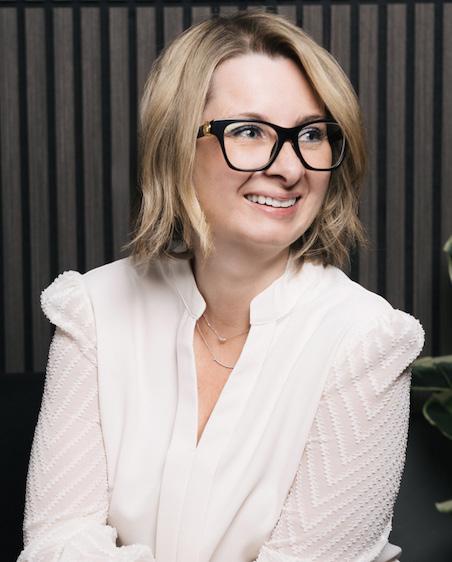
Dr. Maggie Augustyn, FAAIP, FICOI is a practicing general dentist, owner of Happy Tooth, author, and inspirational keynote. Recognized as one of the top 250 leaders in dentistry, she captivates audiences with her ability to evoke emotion by giving attention to the things that we suppress in the hopes of making us feel less alone and more connected. Dr. Augustyn is the national spokesperson for the Academy of General Dentistry and faculty member for Productive Dentist Academy. www.maggieaugustyn.com www.myhappytooth.com
1 https://www.sep.benfranklin.org/news/well-good/
2 https://hbr.org/2012/06/a-brief-history-of-doing-well





Victoria S. Brokaw
As a North Carolina dentist, you are likely accustomed to navigating various regulatory requirements that impact your practice, from licensing and insurance to patient care standards. However, a relatively new requirement that may have flown under the radar is the Beneficial Ownership Information (BOI) filing, which has significant implications for dental practices and their owners. Most dental practices will not fit an exemption to filing as most exemptions are related to financial services businesses, that have other licensure and registration.
The Beneficial Ownership Information (BOI) filing is part of the Corporate Transparency Act (CTA) which was enacted as part of the National Defense Authorization Act (NDAA) in January 2021. The CTA mandates that certain entities, including corporations, limited liability companies (LLCs), and similar structures, file information with the Financial Crimes Enforcement Network (FinCEN) about their beneficial owners. A beneficial owner is defined as a person who directly or indirectly owns or controls at least 25% of a business entity or has significant control over the entity’s operations.
The goal of this law is to combat money laundering, terrorist financing, and other illicit activities by increasing transparency in corporate ownership. The BOI filings will help the U.S. government identify the individuals behind the businesses and their financial activities.
Practices that operate as corporations or LLCs in North Carolina (or anywhere in the U.S.) must comply with the BOI filing requirements. The BOI filing applies to all entities formed or registered to do business in the U.S., including:
· S-Corporations
· C-Corporations
· Limited Liability Companies (LLCs)
· Limited Partnerships (LPs)
If your dental practice operates under any of these structures, you may need to file beneficial ownership information with FinCEN, depending on the circumstances.
Not all entities are required to file BOI information. There are several exemptions, including:
• Large operating companies: Entities with more than 20 employees, over $5 million in annual revenue, and a physical office in the U.S.
• Regulated entities: Businesses already regulated by federal or state agencies, such as banks, credit unions, and registered investment advisors.
However, most similar privately held dental practices will not qualify for these exemptions and will therefore need to submit a BOI filing.
If your dental practice is required to file, you will need to provide detailed information about the beneficial owners of the business. The filing must include:
1. Full legal name of the beneficial owner
2. Date of birth
3. Residential address (or business address for owners with no personal residence)
4. A unique identifying number from an official identification document, such as a passport or driver’s license
5. A statement of ownership or control over the dental practice
This information will be securely stored by FinCEN, and the filings will be accessible to authorized parties such as a law enforcement, regulators, and financial institutions as needed.
The BOI filing deadline varies based on the type of business entity:
• For new entities: Dental practices formed after January 1, 2024, must file their BOI Information with FinCEN within 30 days of formation and registration.
• For existing entities: Dental practices formed before January 1, 2024, must submit their BOI information to FinCEN by January 1, 2025.
Once submitted, the information must be updated annually or whenever there is a significant change in ownership or control.
Failure to comply with the BOI filing requirements can result in severe penalties. Businesses that fail to file, knowingly provide false information, or fail to update their filings as required could face penalties of up to $500 per day for non-compliance. In extreme cases, criminal penalties could be imposed, including fines up to $10,000 or even imprisonment for willful violations.
As a dental practice owner, the consequences of non-compliance are too significant to ignore. Keeping your BOI information up to date is crucial to avoid penalties and ensure your practice remains in good standing with regulatory authorities.
1. Consult with Your Attorney or Accountant: Given the legal complexities involved, it is wise to consult with your attorney or accountant to understand your specific filing obligations. This will ensure that your practice meets all the necessary requirements and avoids penalties.
2. Prepare Your Information: Start gathering the required information for each beneficial owner. If you are the sole owner of your practice, this will be straightforward, but for partnerships or practices with multiple owners, make sure that each owner’s details are collected.
3. File with FinCEN: Once your information is gathered, you or your legal representative can file the required documentation with FinCEN. Ensure the filing is accurate and completed on time to avoid any fines or legal issues.
The BOI filing requirement is an important regulatory development that affects dental practices in North Carolina. By understanding the new law and its implications, you can ensure that your practice stays compliant and avoids unnecessary penalties.
If you have any questions about whether your dental practice needs to file or how to navigate the process, it’s highly recommended to seek legal counsel. The Attorneys at Hull & Chandler, P.A. know the BOI filing requirements and can discuss with you whether your company needs to file. We can also discuss with you your business structure and discuss whether there may be a more efficient entity structure to use going forward. Feel free to contact Hull & Chandler to discuss your BOI filing requirements or other business needs.

Victoria S. Brokaw is an attorney at Hull & Chandler, P.A. Victoria’s practice focuses on helping public and privately-held clients with a wide range of transactional matters, including mergers & acquisitions, commercial contracts and corporate governance. She graduated magna cum laude and with Phi Beta Kappa membership from Elon University in 2015. In 2022, Victoria earned her J.D. from Vanderbilt Law School. Victoria is barred in North Carolina and South Carolina. (Hull & Chandler assisted in founding the nonprofit Carolinas Dental Advisors (CDA). The CDA helps to coordinate business resources for dental professionals.)
Greg Essenmacher
When patients seek full-arch dental treatments, they’re not just looking for a smile makeover; they’re embarking on a journey to regain their confidence, health, and happiness. In the competitive world of dentistry, it’s the patient experience that often sets one practice apart from another. While the clinical outcome is, of course, essential, the way you make your patients feel throughout the process can turn them into lifelong advocates for your practice.
Exceptional patient experiences aren’t just about good customer service; they’re about creating emotional connections, demonstrating empathy, and guiding patients through every step of their journey with trust and care. Let’s dive into five keys to creating that unforgettable patient experience.
Full-arch patients are different from your average dental patient. These individuals have typically been dealing with significant dental issues for years, sometimes even decades. When they walk into your office, they’re often anxious, vulnerable, and hopeful all at once. This isn’t just another routine checkup for them—it’s a life-changing decision.
To build that emotional connection, start by truly listening to their story. Every patient has a unique journey that brings them to your door. Understanding their struggles and motivations helps to create a relationship based on trust. And trust is the foundation for any long-term patient relationship.
But how do you establish this connection? It starts with empathy and continues with clear, consistent communication. From the first lead call to the final post-op checkup, every touchpoint should reinforce that you’re invested in their journey and committed to their success.
It’s crucial to remember that the emotional bond you create isn’t just a one-time event. It should be nurtured continuously. Regular check-ins during the treatment process, offering personalized updates, and providing comfort when they’re feeling anxious are all ways to deepen that emotional connection. Building relationships this way will ensure patients feel valued, not just as customers but as people.
In today’s fast-paced world, genuine empathy can feel like a rare commodity. Yet, it’s absolutely crucial for full-arch patients. These patients have often experienced negative encounters in the past, whether with dental professionals or other areas of healthcare. They’re walking in with skepticism and sometimes fear. This is where empathy comes into play—not just saying, “I understand,” but truly showing it. Empathy means listening to your patients’ concerns, validating their feelings, and offering reassurance at every step of the process. For example, when a patient expresses fear about an upcoming procedure, take the time to address their concerns thoroughly, rather than rushing through the conversation.
For a lot of full-arch patients, this could be their first major dental procedure after years of putting it off. Maybe they’ve avoided the dentist due to bad experiences or because they feared judgment for their current dental health. Acknowledging this and expressing understanding, without judgment, is key to creating a safe space for them to move forward with treatment.
Empathy should be baked into every interaction, whether it’s the initial phone call or during the treatment itself. Patients can sense when you genuinely care about them and their outcomes. And the more they feel that care, the more likely they are to stay engaged, trust your recommendations, and ultimately move forward with treatment.
What sets your practice apart? Is it your expertise, your tech-
Full-arch patients generally fall into one of two categories: directto-consumer (DTC) or traditional referral patients. Each type has different expectations, and understanding those differences can significantly improve your patient experience strategy.
DTC patients often find you through digital advertising or social media. They’re used to convenience and speed, coming from a culture of instant gratification. For them, responsiveness is key. If you don’t get back to them quickly or if the process isn’t seamless, they’ll likely move on to the next option.
This group often makes decisions based on what they’ve seen online or via word of mouth on social platforms. They expect things to move quickly, from the first call to the consultation, and may compare practices based on reviews, appointment avail-
In today’s fast-paced world, genuine empathy can feel like a rare commodity. Yet, it’s absolutely crucial for full-arch patients.
nology, or maybe your approach to patient care? Whatever it is, you need to know it, own it, and communicate it effectively to your patients.
In today’s digital world, full-arch patients are savvy. They’ve done their research, compared options, and evaluated your practice against competitors before even setting foot in your office. That’s why your USP needs to be clear—not just in your marketing, but in your day-to-day patient interactions.
If you have advanced technology, like 3D imaging, or a highly experienced surgical team, make sure patients understand how these elements benefit them directly. It’s not about bragging; it’s about educating patients on why they should choose you over someone else. The clearer and more compelling your USP, the more confidence patients will have in moving forward with treatment.
But it’s not enough to simply know your USP internally—you need to consistently share it with your patients. Every member of your team, from the front desk to the treatment coordinator, should be able to clearly articulate what makes your practice unique. This creates a cohesive message that reinforces your value throughout the entire patient journey.
ability, or how well your office “feels” during initial contact. DTC patients are looking for efficiency and responsiveness, and if you fail to meet those expectations, they’ll easily move on.
Traditional referral patients, on the other hand, come to you with an established level of trust, usually because they were referred by a dental specialist or another healthcare provider. They’re more relationship-focused and might be willing to give you more time, but they still expect an outstanding experience.
For this group, your ability to build relationships and trust is key. They’ve likely already heard great things about you from their referring provider, so you need to live up to that expectation by providing the same level of care and attention that made their referring provider confident in recommending you.
By tailoring your approach to meet the expectations of both DTC and referral patients, you ensure that everyone feels understood, valued, and catered to, regardless of how they found your practice.
Creating an exceptional patient experience doesn’t stop with empathy or communication—it’s also about how seamlessly




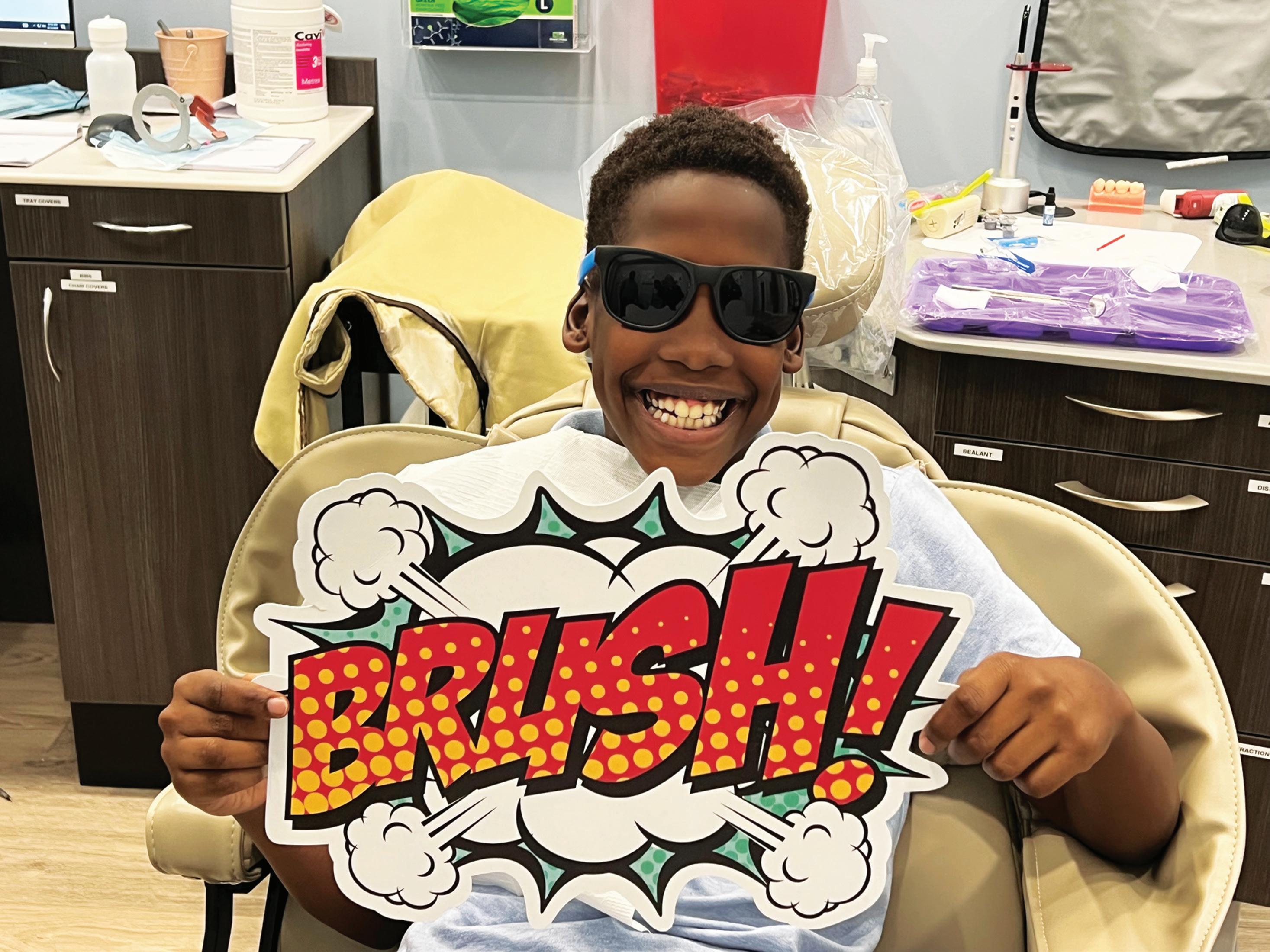

Kids with healthy smiles have a better chance of reaching their potential. Unfortunately, millions of kids across the United States lack access to a dental care provider. This often results in poor oral health, di culty eating, sleeping, and concentrating at school. With support from CrownBuyers, more than 3.4 million kids have received clinical treatment services at the safety-net dental clinics that participate in our Dental Resource Program since 2006. Visit AmericasToothFairy.org to save more smiles in 2025!
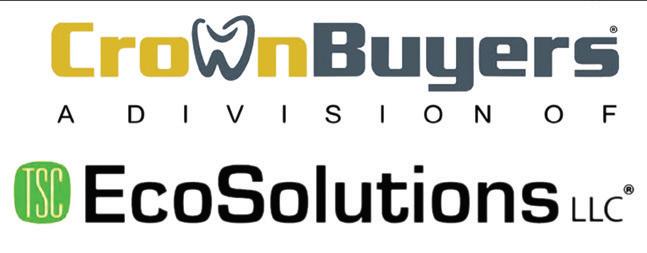
Through a special o er from CrownBuyers, you can get paid top dollar for your dental scrap and support our mission to increase access to dental services for children in under served communities. Get more details at AmericasToothfairy.org/scrap4smiles.
Ifirst met Dr. Brendan Gallagher in dental school because he was 3 years below me when we were at Stony Brook. He is currently in his last year of oral surgery residency at NYU/Bellevue. He also co-founded multiple pages on Instagram: @studentsofdentistry, @topdentalpractices, @ elitedentists, @topattorneys, and @topwineries in addition to his personal page. I honestly don’t know how he has time for everything! Recently, he has been appearing on my social media feed with his different podcast clips and Q&A sessions. We made a deal that I would appear on his podcast if he agreed to be interviewed for my article, so here we are!
DR. LUKE SHAPIRO: SO HOW DID YOU GET INTO SOCIAL MEDIA?
Dr. Brendan Gallagher: We started Students of Dentistry back in the first year of dental school. That’s kind of how it began. And then a year later I had a team, and I brought on Sean Zar, my buddy who went to Stony Brook. Then we created Elite Dentists and Top Dental Practices. We started with those three. I even went further, and I created Top Wineries. Top Wineries is now my biggest account, and we ran those for four or five years. After I got into oral surgery residency around 2021, I started to post my own content of conversations and podcasting. Little
clips of things that would help prospective students and residents like how to interview or study.
We utilized Students of Dentistry as a base to create the PreDent Mentor Map right around 2020, during COVID, because we wanted to give predental students better access to resources and materials. It has information like school tuition, class sizes, how many students per class, and average DAT scores. Basically information and data that they can use when they’re applying to schools - all for free. We connected with all of the students we knew at all the dental schools in the US on a map. We redid the map about a year ago and created a better website where it’s actually a map and not just a portal to connect with students for questions. It’s a much better visual experience.
LS: ANY ADVICE ON USING SOCIAL MEDIA?
BG: Use the apps you enjoy most to connect with others. Look for and create positivity in them. If you can’t find what you’re looking for, create it. That’s the beauty of social media. Your reputation builds on the light you put out into the world. Be the change you want to see
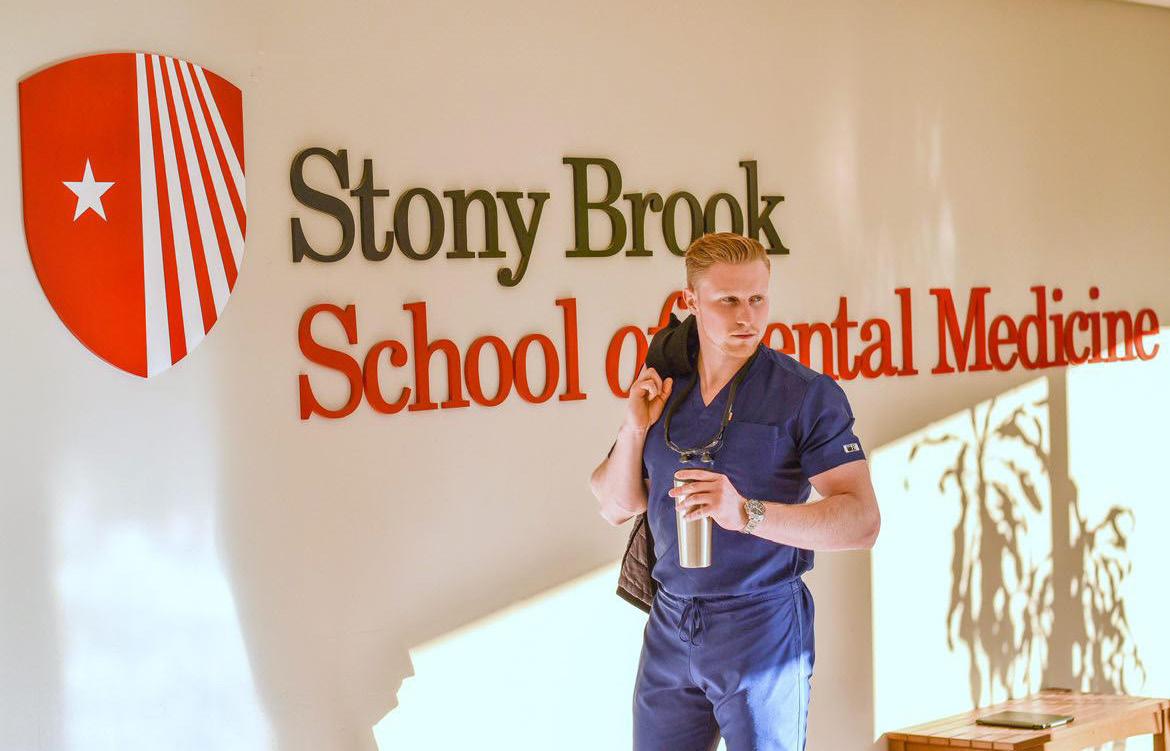
LS: WHAT’S THE HARDEST THING ABOUT SOCIAL MEDIA?
BG: The hardest thing about social media is we get influenced and led into thinking we have to do it this way or that way, as far as creating goes, which is entirely wrong. You can do what you want, first, and then use social media to form around your interests secondarily. For example: maybe you’re camera shy but great at audio-only or writing – podcasts are perfect for audio and then LinkedIn, X, and Threads are powerful written-content apps. After using self-awareness to identify your talents and interests, you can then formulate your strategies. And just start, don’t wait for the perfect moment. Start today and just make content true to yourself without having to follow any rules or plans. Just do what you find excitement in.
LS: WHAT DIRECTION DO YOU SEE YOURSELF GOING IN THE FUTURE?
BG: I do all this to mentor and educate. I’m not an influencer. I’m not trying to sell products or tell you to buy scrubs or whatever. I want to create things like companies and services and websites and maybe even an app one day. I think the biggest thing that I want to do in the next five years is to create a new dental insurance company that’s truly non-profit. I see gaps in our career space, the healthcare space, and just in the world in general. It’s very fantastical, but I really enjoy trying to attack problems and fix them and trying to make the world a better and
brighter day tomorrow than it is today. If everything works, it’ll be compensated such that I can get back to a quality of life that I like. Have some more time for my other hobbies, like producing music, or to spending more time with my girlfriend’s family, and traveling. Basically, to have a more controlled lifestyle.
But, it’s really to make things better. And I do believe that I don’t do it for the money. I do it because I think it’d be really nice to see a better tomorrow than today. Today’s really good, but I think a better tomorrow is always something exciting to look forward to. That’s kind of what drives me to do it. Create a better future than where we are at today. A stronger foundation for the future.
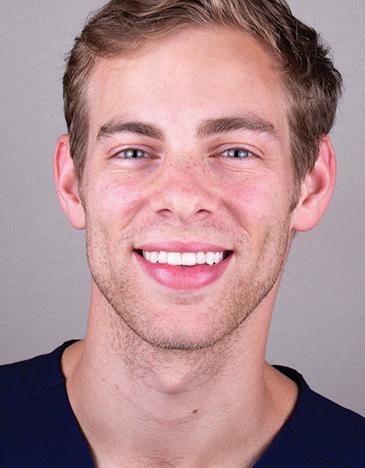
Dr. Lucas Shapiro is a graduate of Washington University in St. Louis and Stony Brook University School of Dental Medicine, where he received his Doctor of Dental Surgery. He completed his post-doctoral orthodontic training at Tufts University School of Dental Medicine. He currently practices orthodontics at Lemchen Salzer Ortho in NYC. He started the Instagram page @futuredentists, works with the educational organization @ignitedds, and has an orthodontic tiktok page @drshap
Dr. Ashley Lerman
In today’s competitive dental market, success is no longer just about clinical expertise or cutting-edge technology — it’s about building trust, relationships, and loyalty with your patients. A patient-centric approach to care is more than just a buzzword; it’s the key to long-term growth and sustainability in your practice. As someone who has balanced being a business owner, dentist, and mom, I’ve come to realize that meeting patients where they are, understanding their needs, and creating an exceptional experience is what sets truly successful practices apart.
This mindset has shaped not only how I interact with patients in clinical settings but also how I’ve approached building Firstgrin, my company focused on preventive oral care for families. Patient-centric care isn’t just a practice philosophy — it’s the foundation for meaningful change in oral health outcomes and a powerful differentiator in an increasingly crowded market.
At its core, patient-centric care is about placing the patient’s needs, preferences, and experiences at the center of every decision you make. It’s about understanding their individual journeys and making them feel like partners in their own care, rather than passive recipients.
For dental practices, this means going beyond cleanings and procedures. It involves educating patients, addressing their fears, and providing them with tools to maintain good oral health at
home. In essence, it’s about treating the whole person, not just the tooth.
But patient-centric care isn’t just good for patients — it’s great for business. Research shows that patients who feel heard, respected, and valued are more likely to return for regular visits, refer others, and adhere to treatment recommendations. In fact, one study published in the Journal of Patient Experience found that practices prioritizing patient satisfaction see higher retention rates and better overall outcomes.
The shift toward patient-centric care isn’t optional anymore — it’s necessary. Today’s patients are savvy, with access to online reviews, social media, and a wealth of information about dental practices. They expect more than just clinical competence; they want to feel cared for and understood.
This shift is particularly critical for women entrepreneurs in dentistry. We bring unique strengths to the table, including empathy, communication, and the ability to build connections. These qualities are invaluable in creating patient-first experiences that resonate and foster loyalty. As a female dentist and business owner, I’ve seen firsthand how understanding and catering to the emotional and practical needs of patients can differentiate your practice from the competition.
For example, at Firstgrin, we’ve found success by focusing on preventive care and education for young families. Our oral care
kits and resources are designed to help parents navigate their children’s dental health with confidence and ease. The feedback we’ve received has reinforced the value of providing resources that genuinely improve patients’ lives.
If you’re looking to adopt a patient-centric approach, here are five strategies to help transform your practice:
Good communication is the foundation of patient-centric care. Patients want to feel heard and understood, especially when they’re anxious or uncertain. Train your team to actively listen to patient concerns, ask open-ended questions, and explain procedures in a way that’s accessible and clear.
Additionally, consider how you communicate outside the office. Are you sending reminders in a way that feels personal and helpful? Are your emails or newsletters educational and engaging? By maintaining an ongoing dialogue with patients, you can build trust and keep them invested in their care.
Digital tools can play a significant role in making your practice more patient-centered. Online appointment scheduling, text reminders, and secure patient portals empower patients to manage their care on their own terms. These small conveniences make a big difference in how patients perceive your practice.
At Firstgrin, we developed a companion app that guides parents through preventive dental care milestones. The app isn’t just about functionality; it’s about making the process feel approachable and less intimidating. Technology, when used thoughtfully, can enhance how patients engage with their oral health and with your practice.
Every patient is unique, and their care should reflect that. Take the time to get to know your patients, their preferences, and their concerns. This can be as simple as remembering their favorite toothpaste flavor or following up on a personal milestone they mentioned during their last visit.
Personalization also means tailoring treatment plans to align with patients’ goals and lifestyles. For example, if a patient has a busy schedule, offer evening appointments or propose phased treatment plans that are easier for them to manage. These small
gestures show that you see your patients as individuals, not just names on a schedule.
Patient education is a cornerstone of a successful patient-centric practice. When patients understand the “why” behind their care, they’re more likely to take an active role in maintaining their oral health. Use visual aids, apps, and simple explanations to demystify procedures and dental conditions.
One way to take education further is by focusing on prevention. For example, our Firstgrin kits and resources are designed to teach parents how to care for their children’s teeth from the very beginning, reducing the risk of future issues. Whether you’re teaching a parent about brushing for the first time or explaining periodontal disease to an older patient, education empowers them to make informed decisions about their care.
Patients form impressions the moment they walk into your office. A warm, welcoming environment sets the tone for the entire visit. Invest in small touches, like a comfortable waiting area, friendly front-desk staff, and thoughtful details that show you care.
Consider how you can make your office more inclusive, too. For example, provide resources in multiple languages, offer kid-friendly spaces, or train your staff to accommodate patients with disabilities. Creating a space where everyone feels valued and respected is the ultimate expression of patient-centric care.
One of the most rewarding aspects of implementing a patientfirst approach is seeing the tangible impact it has on your practice. You’ll notice more satisfied patients, higher retention rates, and increased word-of-mouth referrals. But beyond the numbers, you’ll see the difference in the relationships you build.
Patients who feel valued will trust you not just with their oral health but with the health of their families and friends. They’ll become advocates for your practice, spreading the word about the exceptional care they’ve received. And that kind of loyalty is priceless.
As dental professionals, we have the unique opportunity to make a lasting impact on our patients’ lives. By embracing a
patient-centric approach, we can go beyond treating teeth and start transforming lives. For women entrepreneurs in dentistry, this approach allows us to lean into our strengths — empathy, connection, and community-building — to create practices that stand out.
Whether you’re just starting your journey or looking for ways to grow your practice, putting patients first is the best investment you can make. It’s a philosophy that has guided me as a dentist and as a founder, and I truly believe it’s the future of our industry. When you prioritize the needs, preferences, and experiences of your patients, you’re not just building a successful practice — you’re building a legacy of care.
2025 Midwinter Meeting
Feb. 20 – 22, 2025
160th Midwinter Meeting
McCormick Place West Chicago, IL
The Denobi Awards

Dr. Ashley Lerman is a board-certified pediatric dentist, mom, and a Diplomate of the American Board of Pediatric Dentistry. She completed her education at Columbia University College of Dental Medicine, distinguished as one of only four U.S. dental schools that integrate dental and medical curricula. Her specialty in pediatrics and special needs dentistry was completed at Columbia-University New York Presbyterian, affiliated with Morgan Stanley Children’s Hospital. Driven by a desire to enhance oral health and access to preventive education and information, particularly for pregnant women and kids, she founded Firstgrin. This initiative distributes oral care kits via OBGYNs, pediatricians, and other dental professionals and offers an educational app for parents, promoting early and effective oral health habits, as well as connecting to providers. An active member of the American Academy of Pediatric Dentistry and the American Dental Association, Dr. Lerman is committed to ensuring lasting oral and dental health for families and their children.
Feb. 27 - March 1, 2025 Portland, OR
Women in DSO Annual Conference
March 6 - 8, 2025 Las Vegas, NV
American Dental Education Association
Annual Session & Exhibition
March 8 - 15, 2025
New Orleans, LA
Productive Dentist Academy (PDA)
Productivity Workshop
March 13 - 15, 2025 Frisco, TX
Association of Dental Support Organization Summit
March 7 - 19, 2025 Orlando, FL
Thomas P. Hinman Dental Meeting
March 2 - 22, 2025 Atlanta, GA
Smiles at Sea
April 25 - 28, 2025 smilesatsea.com
Ce on the Beach June 26 - 28, 2025 Cayman Islands
We’d love to see you!
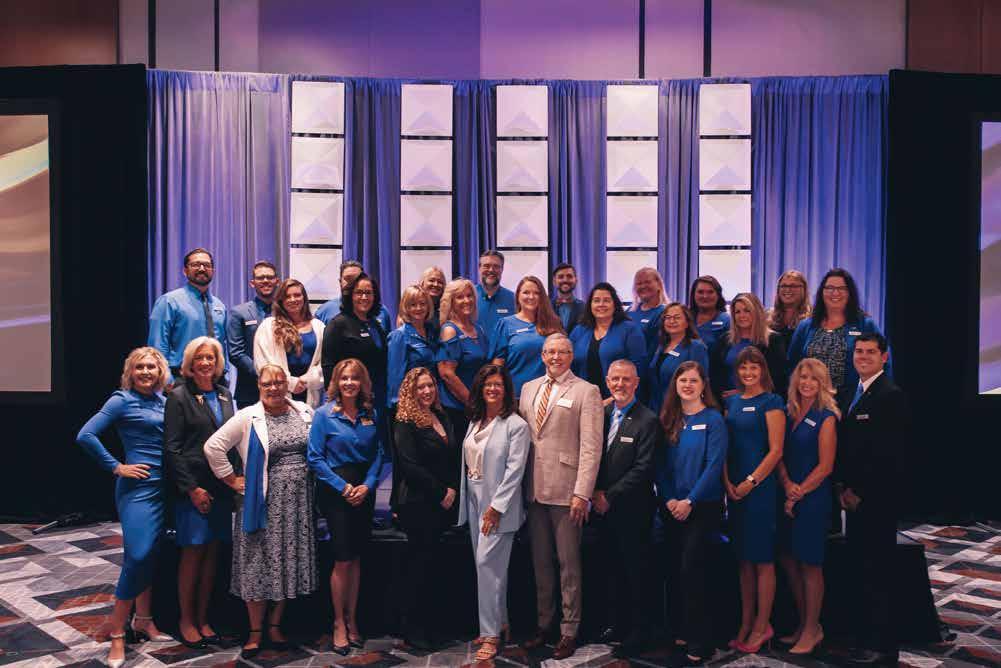
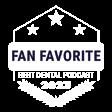
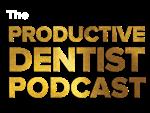

Casey Gocel
Dental service organizations (DSOs), which are nonlicensed, non-clinical corporate structures that provide administrative and back-office management services to dental practices, have discovered the key to maximizing the profitability of dental practices. The existence of DSOs creates competition in the market and presents challenges for dental practitioners looking to preserve their private practices. However, there will always be a place for private practice dentistry in the United States. This is particularly true for fee-for-service practices, where the patient base is motivated by the office experience, rather than the out-of-pocket costs.
While most DSOs are focused on growing revenue and decreasing expenses, private practitioners tend to focus on clinical excellence, patient satisfaction, and employee retention. But, what if private practice owners stole a page from the DSO playbook? What if these owner-doctors also found a way to centralize as many functions as possible to leverage economies of scale and maximize fixed overhead to increase efficiency and profitability at the practice level? Would DSOs continue to thrive?
To stay competitive, private practitioners need to focus not only on patient care, but also on the business side of dentistry. If an owner-doctor can do this while staying true to their core values of providing the optimal patient experience and treating employees well, DSOs will struggle to keep up.
“ACT+” encapsulates four ways that private practitioners can continue to compete and grow in today’s DSO-driven market and comprise the backbone for long-term preservation of private practice dentistry:
A - Add Associates
C - Create Convenience
T - Embrace Technology
+ - Plus Outsource
In most practices, associates are paid based on a percentage of their individual collections or production, ranging from 28% to 35%. This means that when an associate works harder, both the
practice and the associate make more money. On the flip side, if an associate slows down, the associate will make less money. To state in another way . . . more associates mean more money. As long as the associate’s compensation is structured correctly, the addition of associates should always result in an increase in revenue. This concept also works when paying an associate a fixed salary, or a per diem rate; however, there is an added risk that the associate will not be profitable if he or she is underperforming.
Adding associates also creates the opportunity to extend office hours to nights, early mornings, and weekends. Generally speaking, adding associates should not increase your overhead by much. You may need to add an additional assistant or hygienist, but the fixed expenses, such as rent, utilities, and taxes, remain the same.
Another great way to add doctors to your practice is to partner with specialists. If you cannot afford to bring on a full-time
will undoubtedly increase your revenue, that will quickly change if the doctor is able to leave and take your patients and your staff with them.
We live in an instant-gratification environment. Consumers crave convenience. They want to learn everything they need to know about your practice by simply clicking on your website. They want to schedule appointments online and confirm them via text. Patients want flexible office hours, live chat, teledentistry, and 24-hour on-call service.
Once doctors have been added to your staff, it will be easier to create this level of convenience for your patients. With a multi-specialty practice, every possible treatment option can be offered, including clear aligners, root canals, implants, oral
“To stay competitive, private practitioners need to focus not only on patient care, but also on the business side of dentistry”
endodontist, oral surgeon, or orthodontist, hire someone to work at the office one or two days per month. By building a group practice, where several dentists with different specialties work together, you will eliminate the need to refer out specialty work and keep that revenue in the practice. Hours for these specialists can be increased as needed.
The addition of specialists, like the addition of associates, should not increase your fixed costs. Specialists expect to be paid based on a percentage of their personal collections, ranging from 40% to 50%, and expect to bear the cost of their own malpractice coverage. Most specialists can be hired as independent contractors, providing further advantages to both the practice and the specialist.
When adding associates and specialists be sure to enter into a proper employment or independent contractor agreement, which includes termination rights and adequate restrictive covenants, including a non-compete and a non-solicitation of patients and employees. While adding doctors to your practice
surgery, endodontics, sleep apnea, pediatrics, and anything else a patient may require.
When you combine the latest technology with specialists working under one roof, a patient can complete almost any treatment in a single visit. Some multi-specialty practices even have an on-site lab to accelerate case completion.
Typically, the efficiency of offering multiple specialties maximizes economies of scale by making it possible to offer treatment at a lower cost and still have greater profitability. Lowering the cost of treatments such as implants, veneers, and clear aligners can attract even more patients and increase case volume.
Accepting a wide range of insurance is also a form of convenience for patients. While not every doctor may be credentialed with every plan, offering a variety of insurance and fee-for-service options is ideal.
Regardless of your personal opinion of technology, there is no denying its appeal to consumers. Our daily dependence on smartphones to accomplish every task illustrates our inherent trust in technology. Patients want to trust their doctors. If you are using dated equipment and technology, you risk losing their trust.
Unfortunately, while CAD/CAM, CBCT, and lasers are now expected by a younger population of patients, the cost is significant for a solo practitioner. It is often hard to justify investing in large technology purchases, but there is no denying the impact.
For most new patients, their first impression will be your website. If your website is clunky and dated, it is unlikely that you will engage that patient. For the remainder of patients, their first impression will be your office. Society has been trained to instill their trust in spaces that look more like an Apple Store and less like a traditional medical office. So, if the first thing a patient sees when they walk into your office is wood paneling and paper charts, it is probably time to invest in technology (and some fresh office design).
There is a growing number of vendors servicing the dental industry today, which allows practices to outsource the nonclinical elements of the business, such as marketing, SEO, generating patient reviews, insurance processing, billing, scheduling, after-hours call centers, and staff recruiting. These days, you can hire someone to handle almost every aspect of your dental practice.
As a business owner, it is natural to want to maintain control over every facet of your business. However, scattering your focus among all the demands of your practice will not grow your business and likely result in a decrease in productivity, followed by eventual burnout. Instead of focusing on everything, you should pick the one area where you have the biggest impact and outsource the rest. For most practice owners, clinical care is their primary area of focus because it increases revenue, and it is what they were trained to do. But, if you already have several associates, your focus may be better aimed on other areas of growth, such as revenue cycle management, training, or retention.
Regardless of your personal unique ability, the bottom line is – you should outsource the rest. Ideally, hire vendors to assist with functions you deem important but recognize are not your area of expertise. For example, marketing is generally a good task to outsource because it is a potentially lucrative tool that many business owners do not have the time or expertise to focus on. If you are feeling overwhelmed and unsure where to begin, consider hiring a practice management consultant who can help you focus your energy on the things that matter most.
These strategies are big steps, and you do not need to implement all of them at once. However, if your goal is to preserve your private practice in today’s DSO market, you must embrace change . . . you must ACT+.
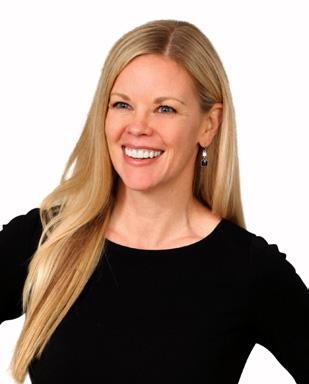
Casey Gocel is a partner and co-chair of the National Dental Law Group at Mandelbaum Barrett PC, in Roseland, NJ. She is the co-author of Pain Free Dental Deals, a go-to resource for entrepreneurial dentists, and The DSO Decision, which provides an overview of how to partner with a DSO or compete with them. Gocel has executed thousands of successful dental practice transitions across the country, in addition to advising doctors on the critical business elements of their practices. Contact her at cgocel@mblawfirm.com.
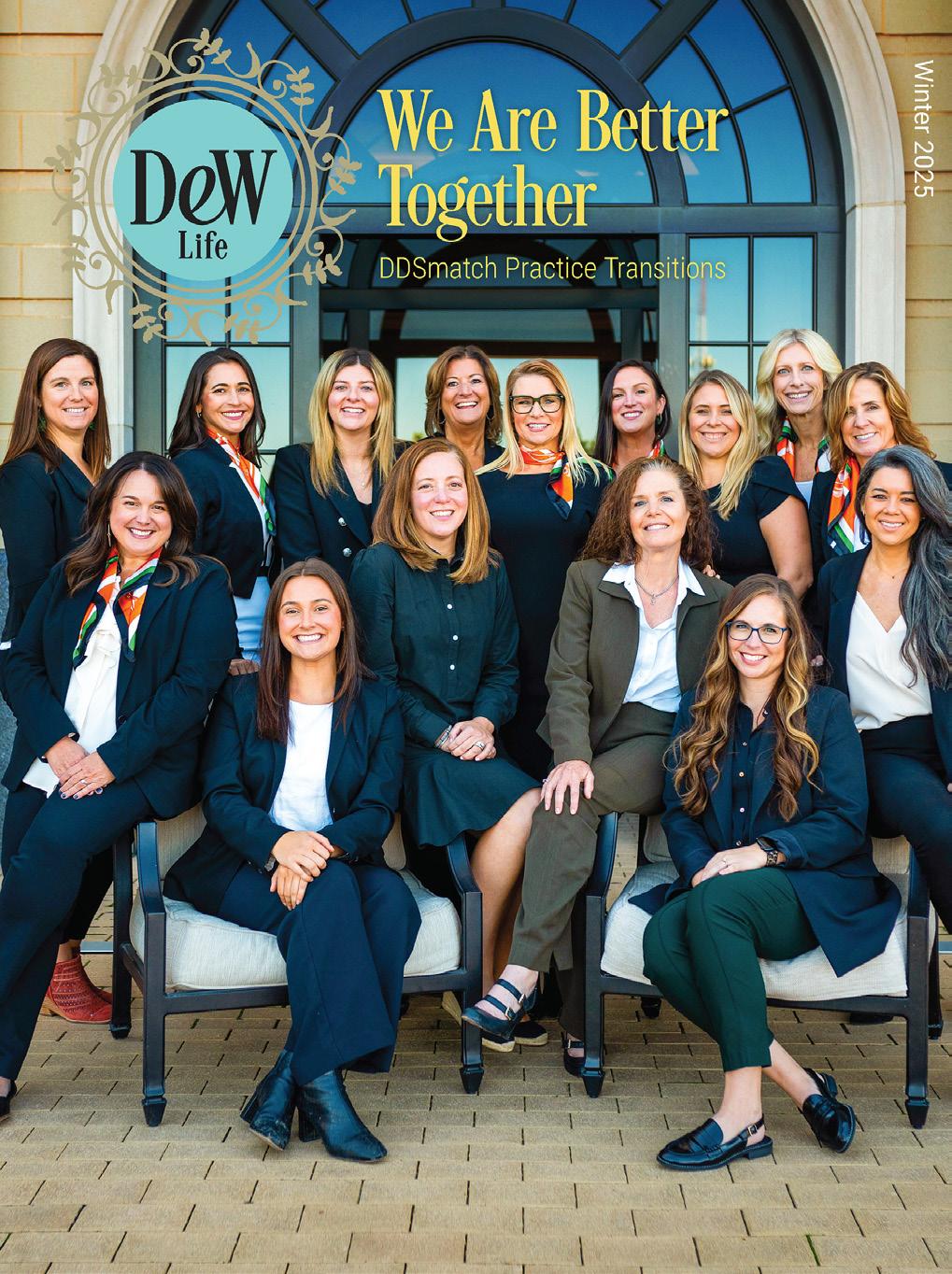
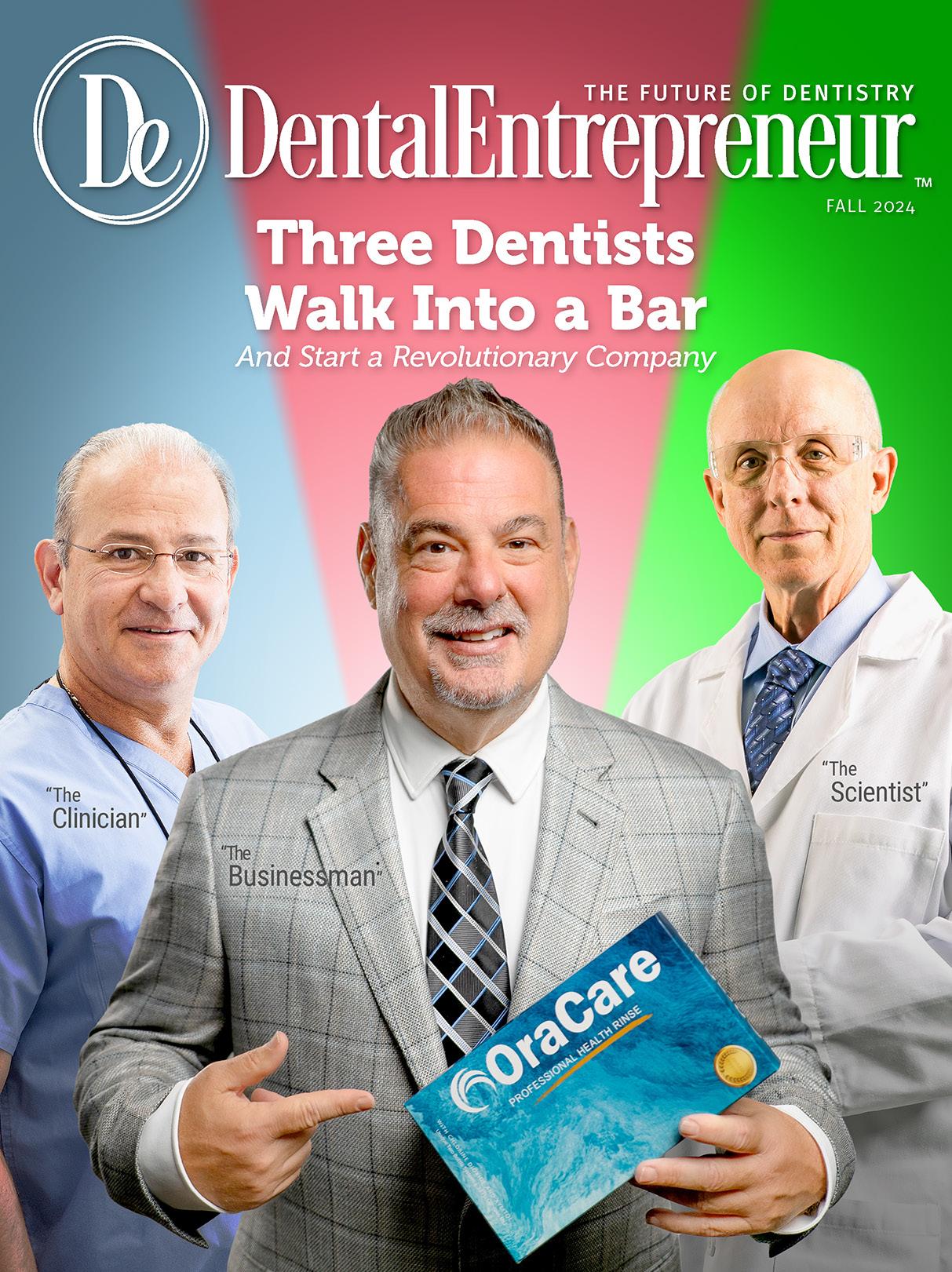
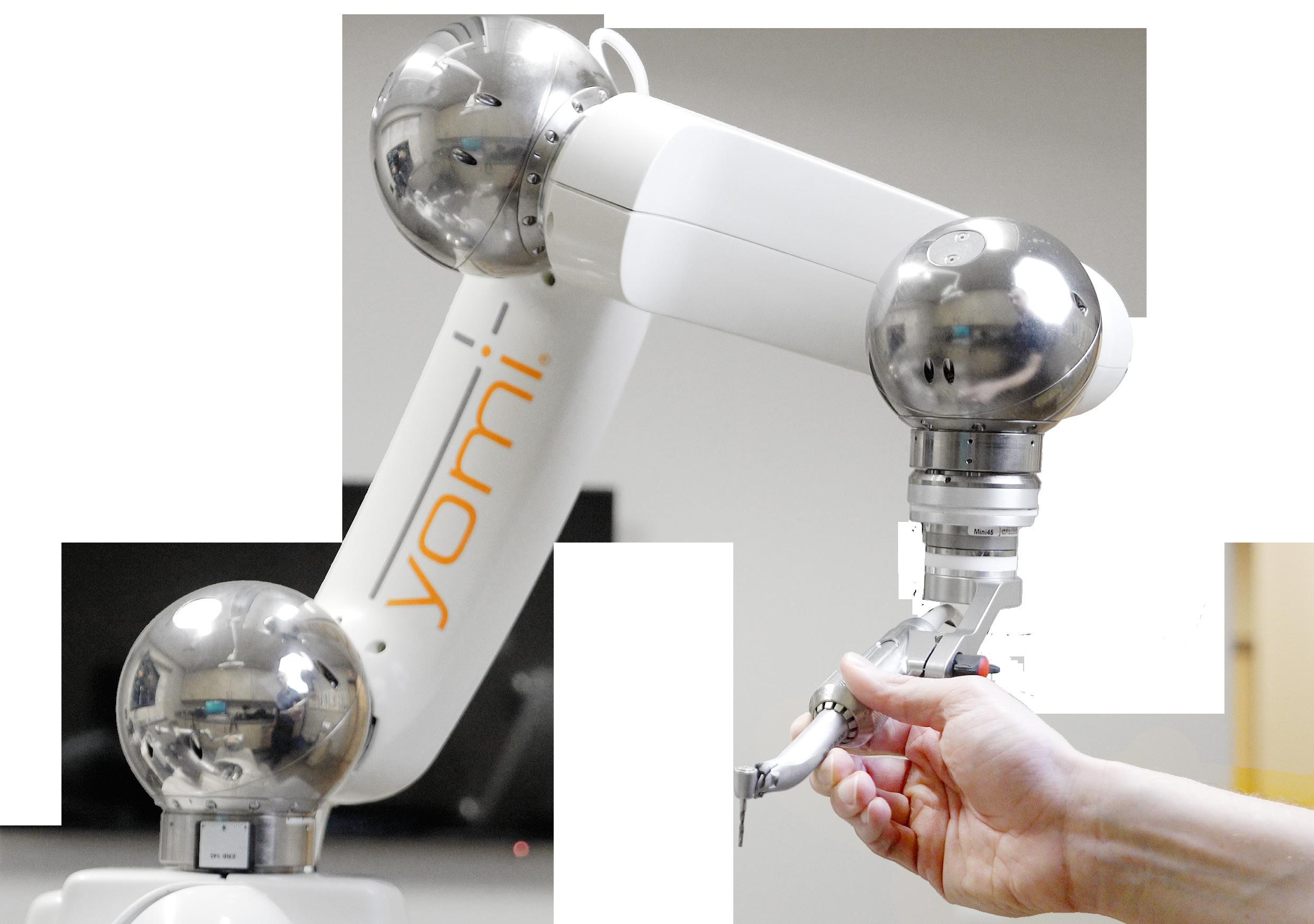
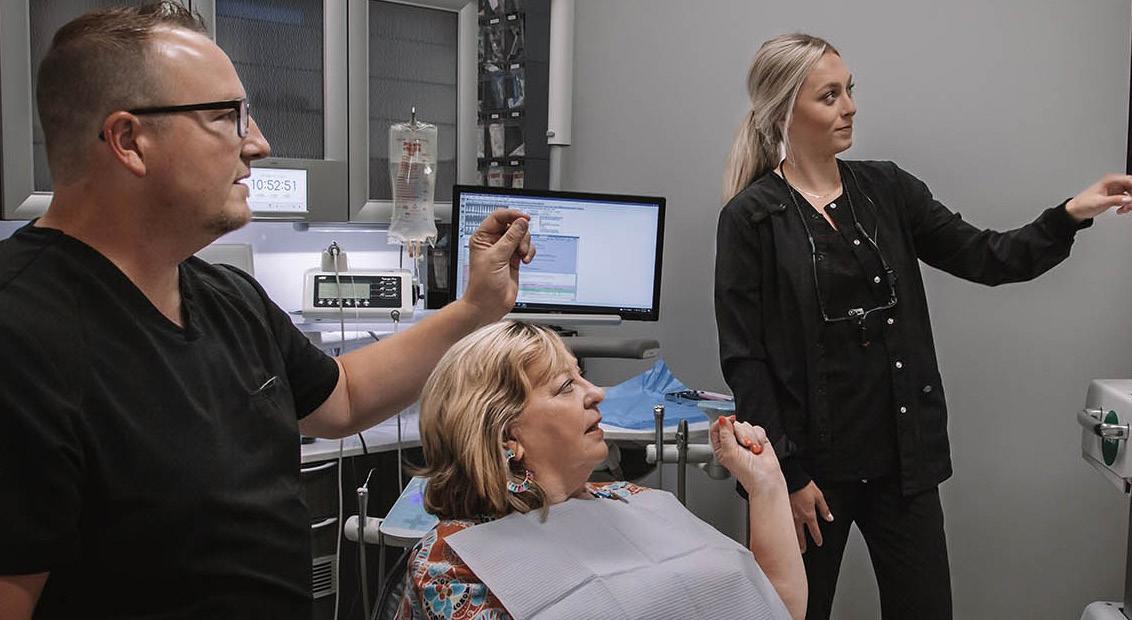
“Many of my colleagues have asked me if I think Yomi is worth it. I say with no hesitation that it is. Since purchasing the system, my full-arch cases have more than doubled, and I’m on track to raise my implant volume by over 60% this year.”
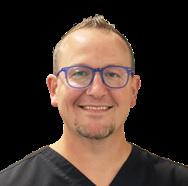
Jonathan Ehlers, DDS
Tiger Family Dental | Sedalia, Missouri
Yomi enables same-day guided surgery.
Yomi empowers confidence in complex cases.
An approach that streamlines the entire process.
Yomi is significantly more precise than any other treatment method.1
More accurate than freehand.
More accurate than guides. More accurate than navigation.
Osteotomies performed with Yomi – and counting
Approximately every 6 minutes an implant is placed robotically.


Ready for Yomi?
Scan to learn more schedule a demo